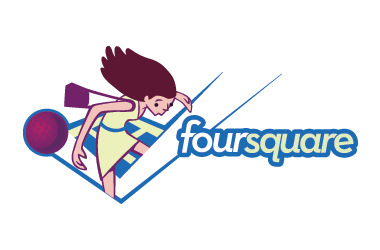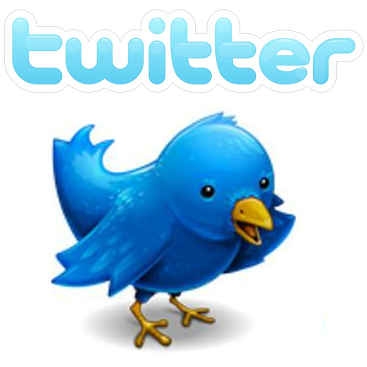Social Networking Resources
It seems like every company online is adding some type of social networking aspect in order to get their users generating content and reviews. Typically sites will have users vote on content so that the best, or most useful items rise to the top in the same way that search engines might categorize content. Users have that capability within the discussion boards in Moodle.
It can be an intimidating world to navigate, but once you know how one or two works then the rest just fall into place. Many smartphones have access to apps for users to tag their locations, write reviews or check-in after performing a recommended task.
FourSquare is one of those accounts. It might be worth considering how you could use some of these new tools in your classroom. Can students "check-in" to your course, or from various locations on a field trip?
You will want to consider how you will use these status update sites carefully as they have been used to target victims who are away from home. Here is an article about oversharing and location.
To Friend or Not to Friend
Social Networking can blur the lines for educators who wish to incorporate these tools into the classroom, but also wish to have their privacy. There are educational alternatives to some of the popular social networking sites, but you want to get to where your students are. Here are some things to keep in mind when navigating this world:
- Keep your boundaries- Create a separate account for your educational/professional identity;
- Have objectives for what you want students to get out of the experience;
- Be willing to document/block/report problems you encounter online. Students today do not think of privacy in the same terms as they did in the past. They will most likely use their personal accounts for access to your social networking activities. If you keep this in mind it will help you plan which networks you may be more comfortable using.
- Have a current understanding of your organization's Acceptable Use Policy (AUP). These can change yearly as technologies change; so have a good understanding of what you and your students are allowed to do;
- Have fun. Social Networking is an informal way to connect with your students. There are multiple Facebook pages for Abraham Lincoln and various other historical figures that incorporate historical facts into status updates.
The intent of these warnings is not to scare you away, but to carefully consider your purpose and how each resource will be used. These tools can be powerful for building community in your classroom across sections. We want our students to be able to navigate the online world responsibly and safely, so ignoring these tools is not an option. Learning to use these tools in school versus unsupervised and undirected is not how we want our students to encounter them.
 - The wiki feature in Moodle is not without its problems. This is a tool that you might want to consider.
- The wiki feature in Moodle is not without its problems. This is a tool that you might want to consider.
 - Social Bookmarking, allows you to share bookmarks with your friends. Yahoo! has announced that they are looking to sell this to another company so it may be best to wait and see what develops in the near future.
- Social Bookmarking, allows you to share bookmarks with your friends. Yahoo! has announced that they are looking to sell this to another company so it may be best to wait and see what develops in the near future.
 -Not just social bookmarking, but also allows users to tag the web. When signed in, you are able to post notes on any web page and make it visible to other diigo users. Some web pages get marked up quite a bit with comments from students who aren't aware that diigo is a social tool, not just for their classes
-Not just social bookmarking, but also allows users to tag the web. When signed in, you are able to post notes on any web page and make it visible to other diigo users. Some web pages get marked up quite a bit with comments from students who aren't aware that diigo is a social tool, not just for their classes 
- Voicethread- Group conversations surrounding your images. A collaborative, multimedia slide show that holds images, documents, and videos and allows people to navigate pages and leave comments in 5 ways - using voice (with a mic or telephone), text, audio file, or video (via a webcam).
 -Private micro-blogging platform built for use by teachers and students. A little more private than...
-Private micro-blogging platform built for use by teachers and students. A little more private than...
 -A micro-blogging site that allows users to update their status in 140 characters or fewer (this includes spaces and punctuation).
-A micro-blogging site that allows users to update their status in 140 characters or fewer (this includes spaces and punctuation).
When you want to send a message to someone at Twitter you can use the @ symbol with their username. For example if I typed, "@moodleshare thanks for the Dune class" they'd receive the message and it would show up on their page.
The hash tag (#) signifies a particular topic or event. If I tweet, "I'm learning a lot of new Google Applications #WebTools287," then everyone in the course could use that same hash tag to make remarks or search for posts only made about that topic.
Privacy settings vary, but Twitter is a relatively simple tool with few settings to alter.
- StatusNet is the open source microblogging platform that helps you share and connect in real-time within your own domain.
As you add more of these tools to your skills you may want to consider using a tool that updates all of your accounts at once. merge accounts and updates all of your social networking sites at once.
merge accounts and updates all of your social networking sites at once.![]() also allows for merging and following several social networks at once. Look for the App on your cell phone's app store, iPad or download the extension for Google Chrome. The link on the logo will take you to the page for all of them.
also allows for merging and following several social networks at once. Look for the App on your cell phone's app store, iPad or download the extension for Google Chrome. The link on the logo will take you to the page for all of them.
100 Inspiring Ways to Use Social Media in the Classroom
Discussion Board for this Section
Assignment